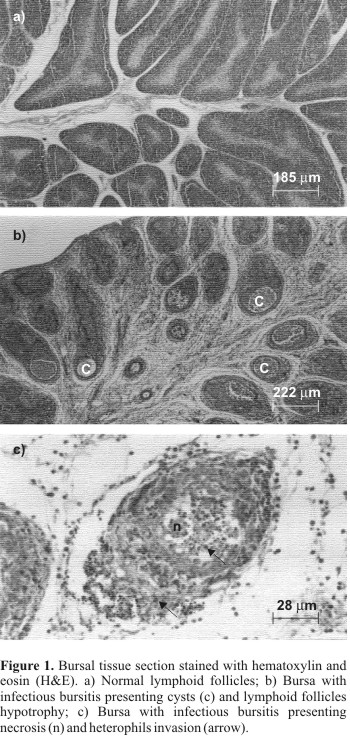In order to identify and characterize the agent of a suggestive clinical case of Gumboro disease (GD) that affected a 34-day-old broiler flock in Buriti Alegre (Goias State, Midwestern Brazil) in the year 2001, we carried out a combination of classic and modern virological methods. Histopathological analysis of the bursa revealed necrosis, presence of depleted follicles, some infiltration of heterophils, edema and formation of cystic cavities that are compatible with lesions observed in GD. Inoculation of embryonated eggs of specific pathogen-free (SPF) chickens with macerated bursa suspension resulted in embryo mortality and lesions which were also compatible with those caused by IBDV. A sample of bursa was submitted to a nested reverse transcriptase-polymerase chain reaction (RT-PCR) procedure to amplify the hypervariable region of the VP2 gene. The amplicon that was obtained from this sample (BR-GO) was digested with the restriction enzymes TaqI, StyI and SspI, but not with SacI, a pattern similar to that observed with very virulent IBDV (vvIBDV) strains. Furthermore, nucleotide sequence analysis revealed alanine, isoleucine, and isoleucine at amino acid positions 222, 256, and 294, respectively, which are also found in vvIBDV strains. Finally, phylogenetic analysis grouped BR-GO isolate with other vvIBDV strains.
chicken broiler flock; Gumboro disease; infectious bursal disease virus; IBDV; RT-PCR; molecular characterization

 Identification and molecular characterization of the infectious bursal disease virus (IBDV) from an outbreak in a broiler flock in midwestern Brazil
Identification and molecular characterization of the infectious bursal disease virus (IBDV) from an outbreak in a broiler flock in midwestern Brazil




